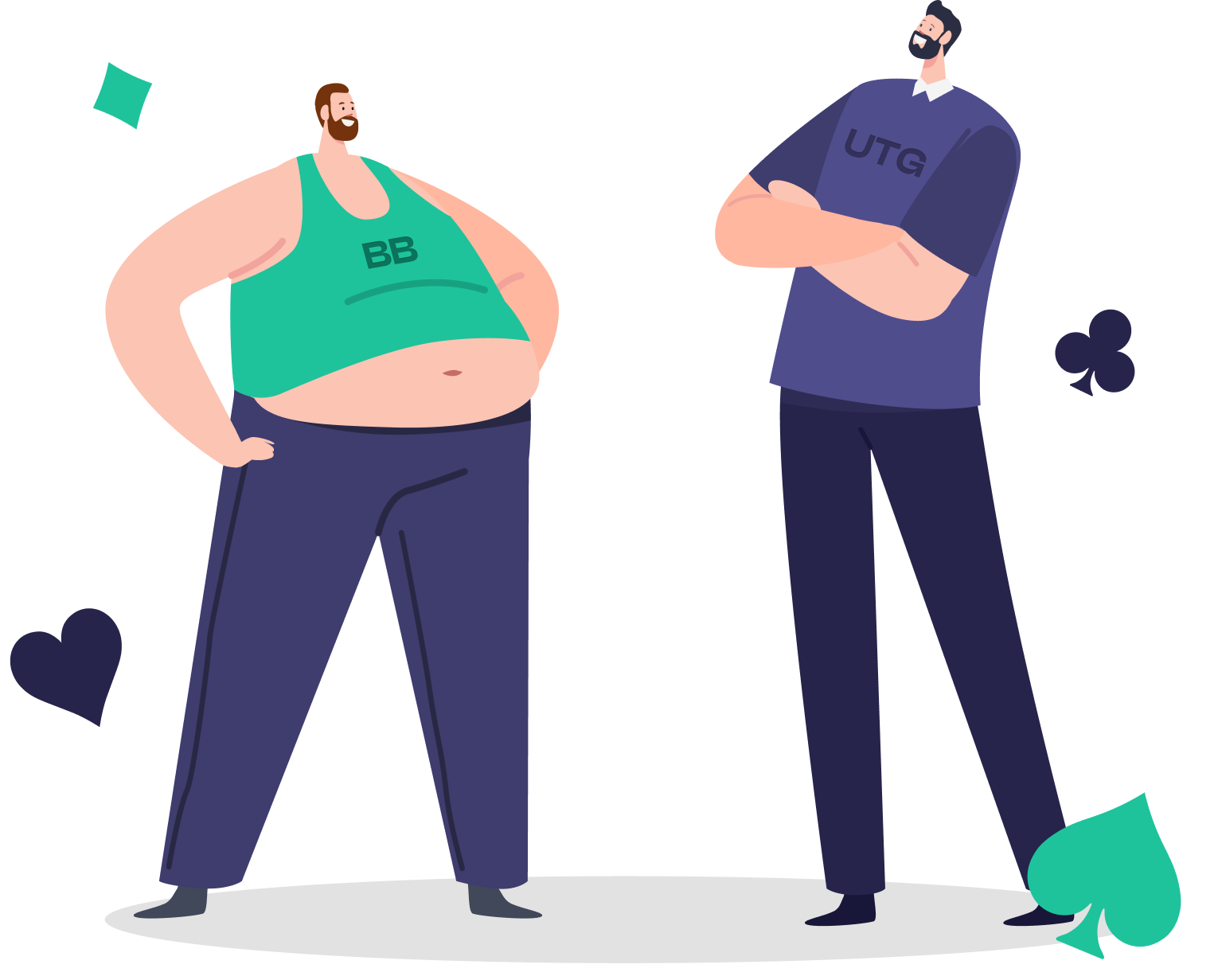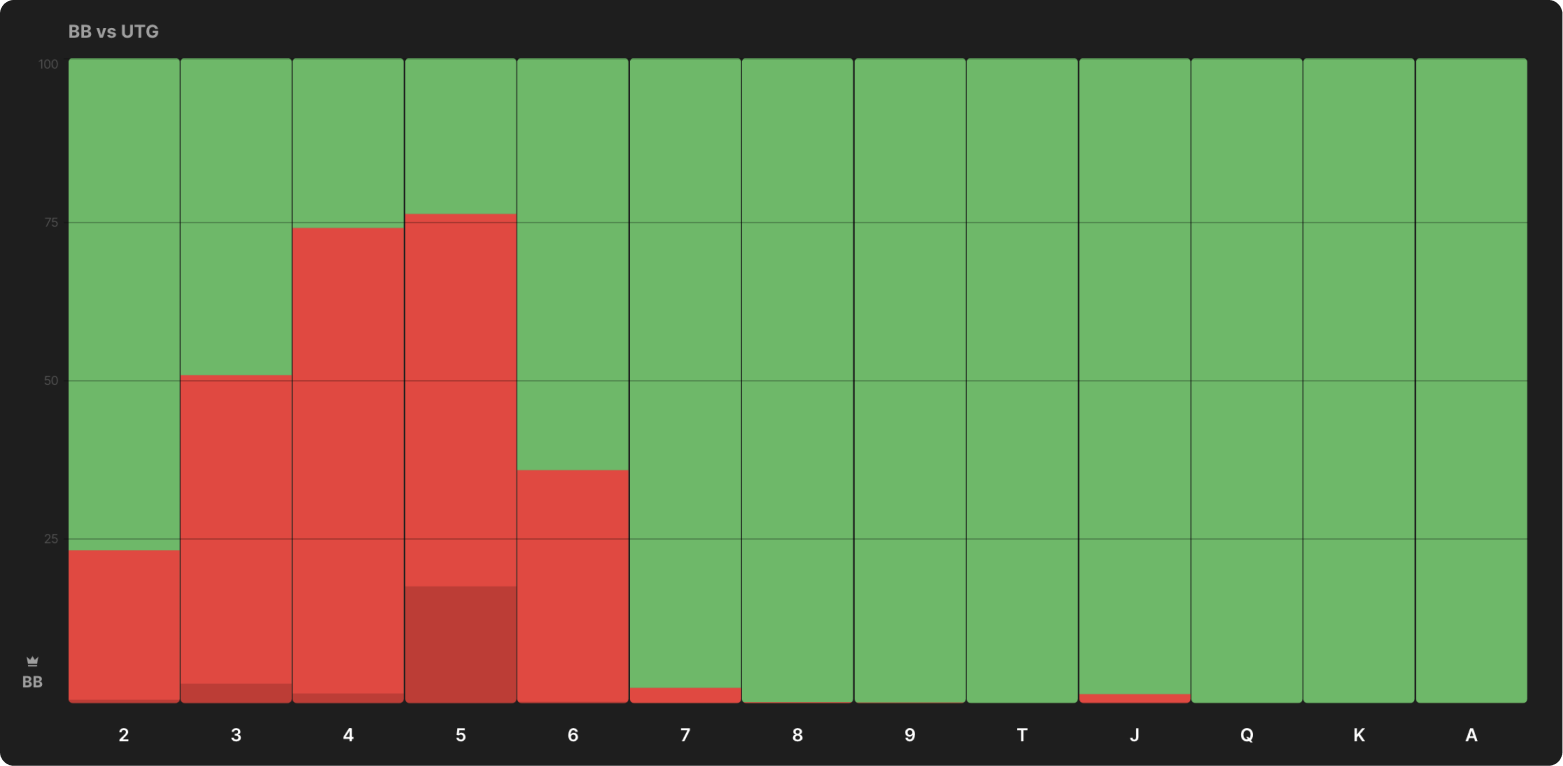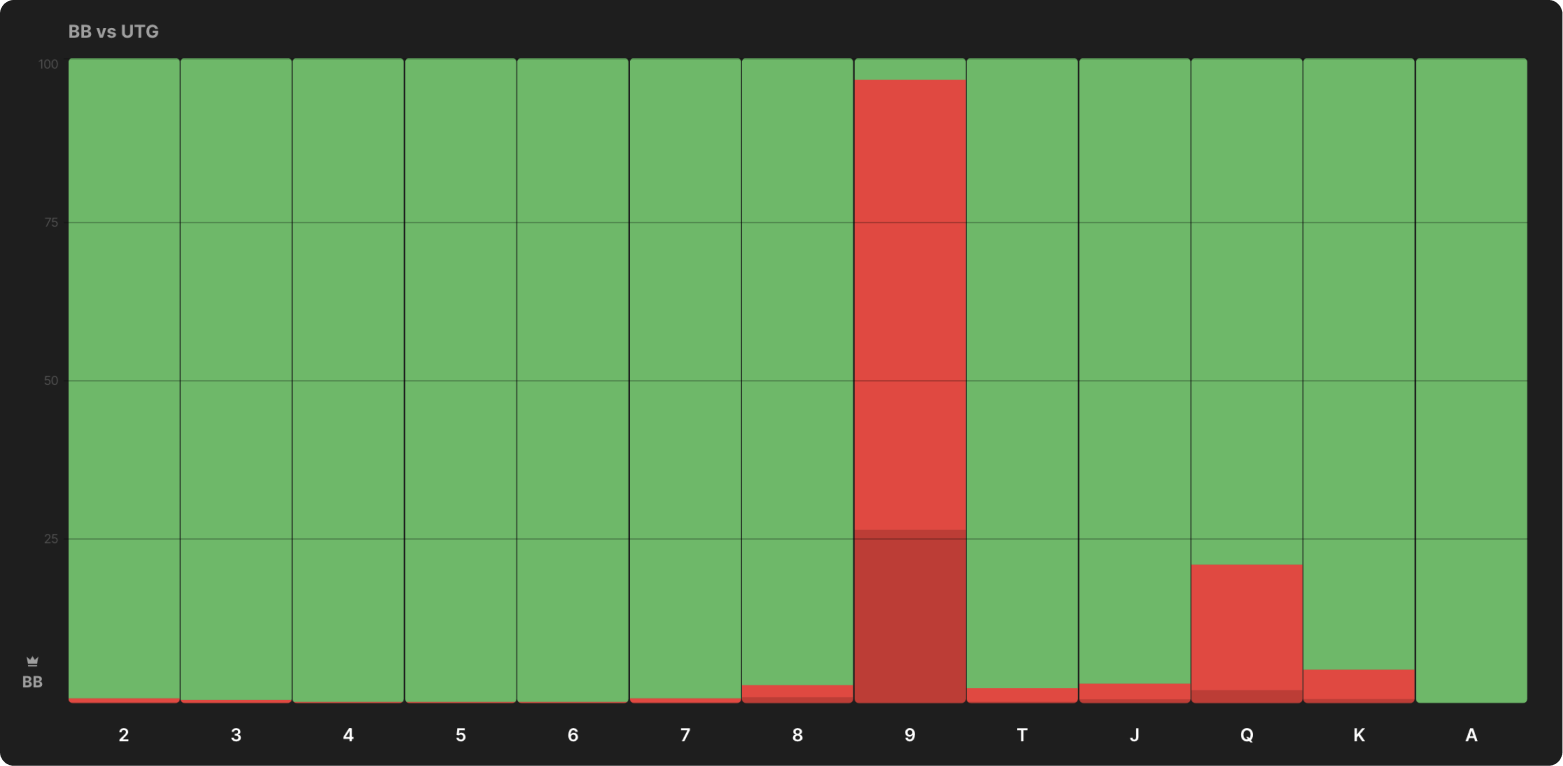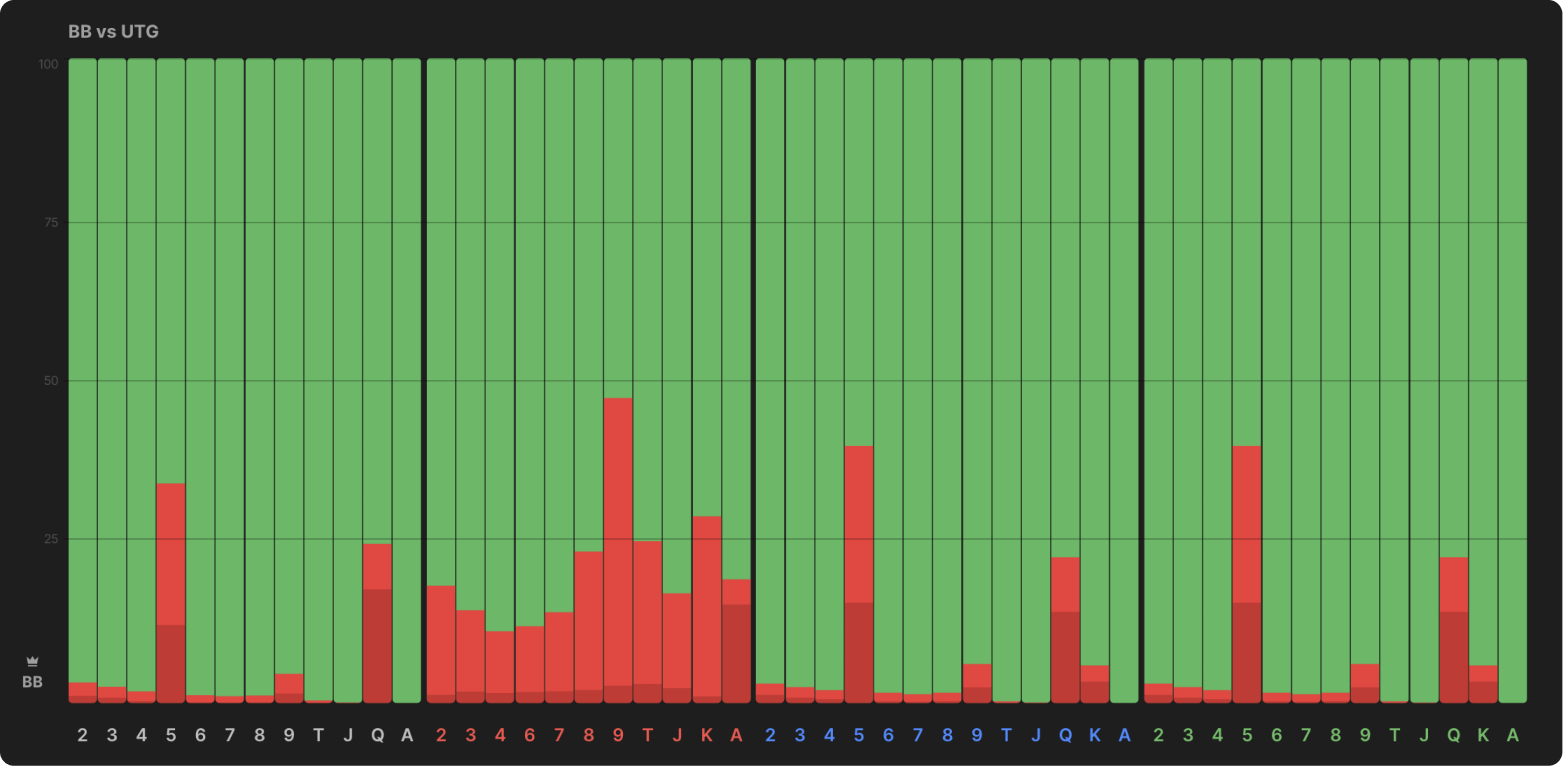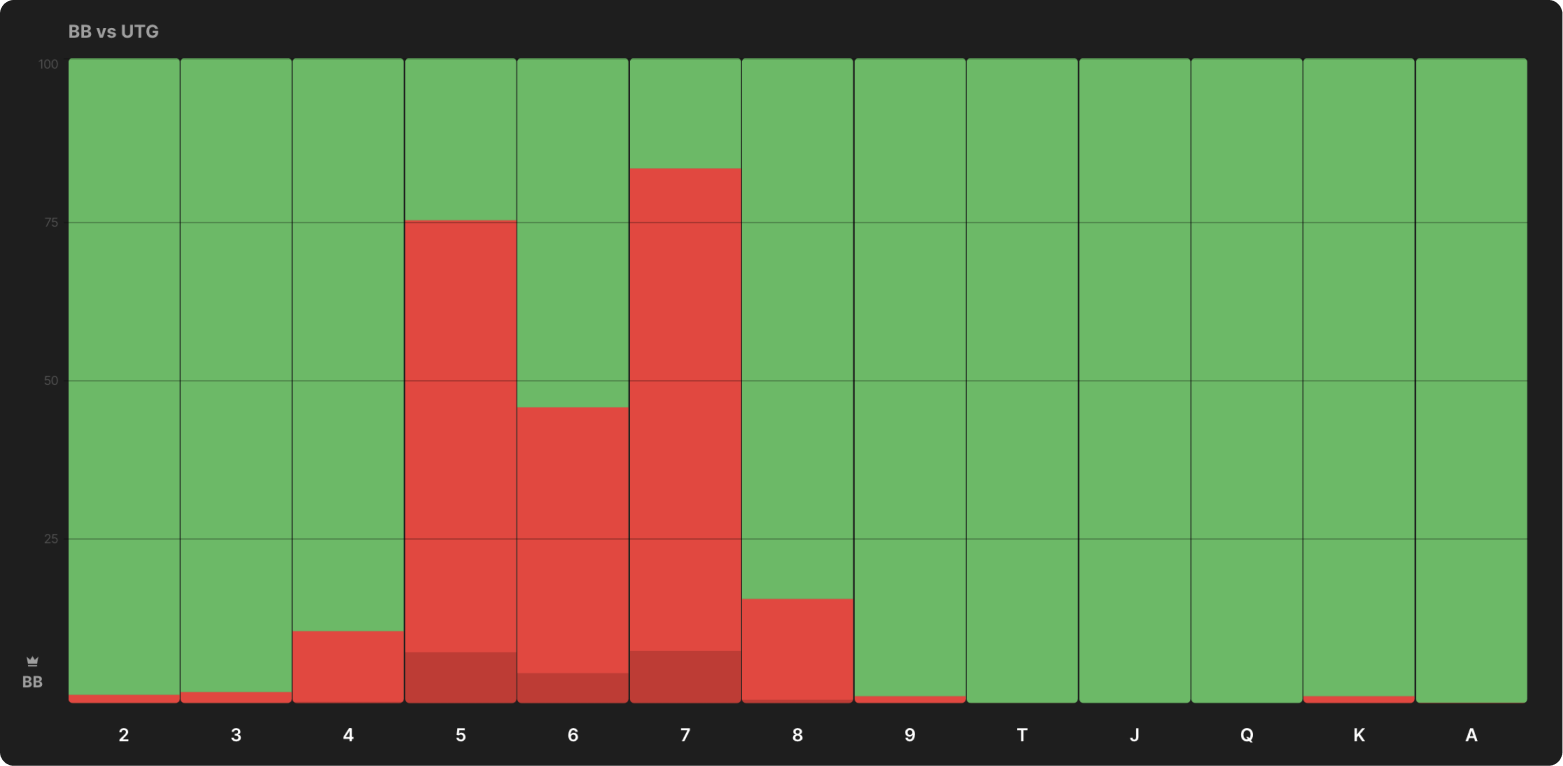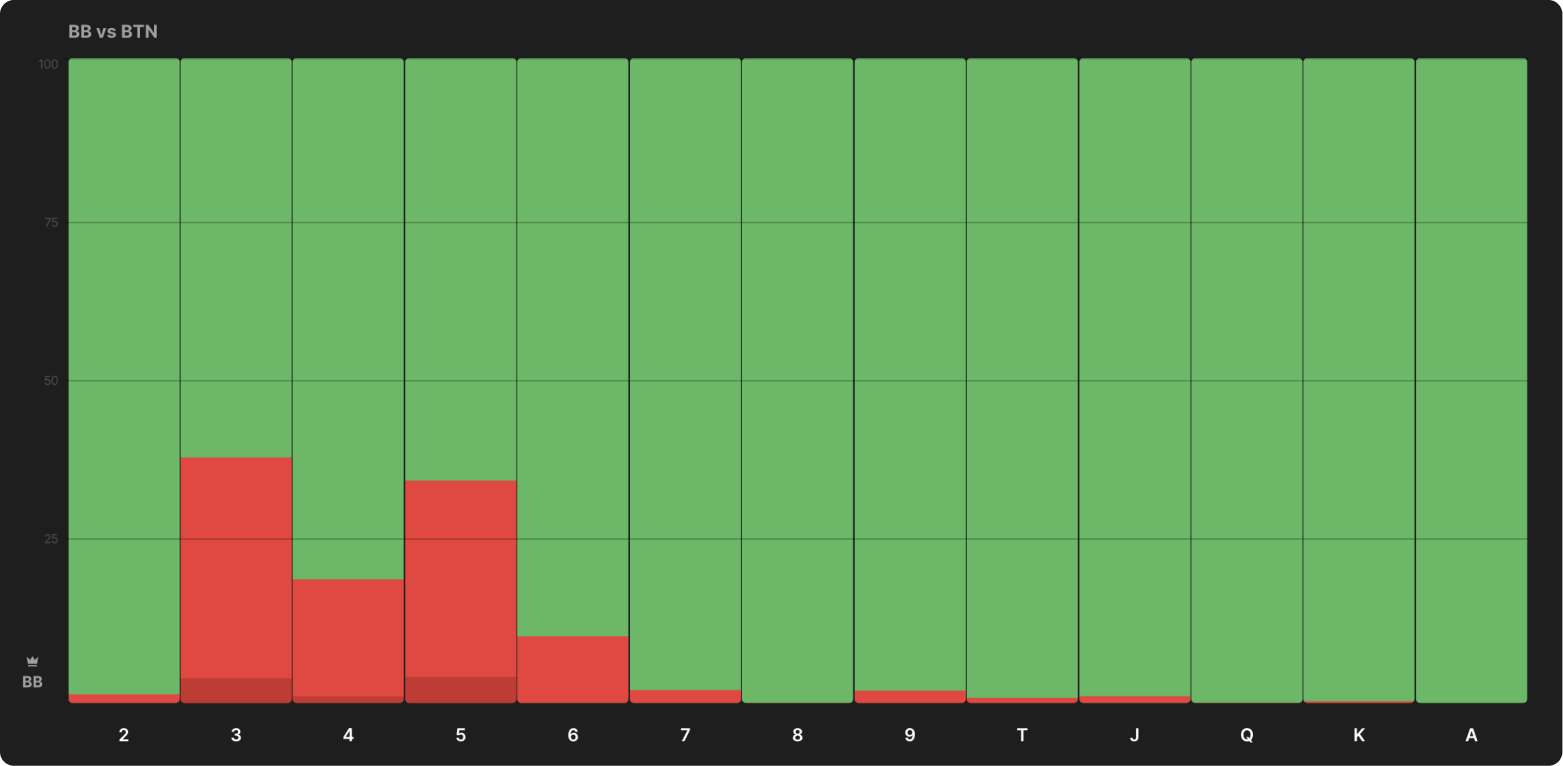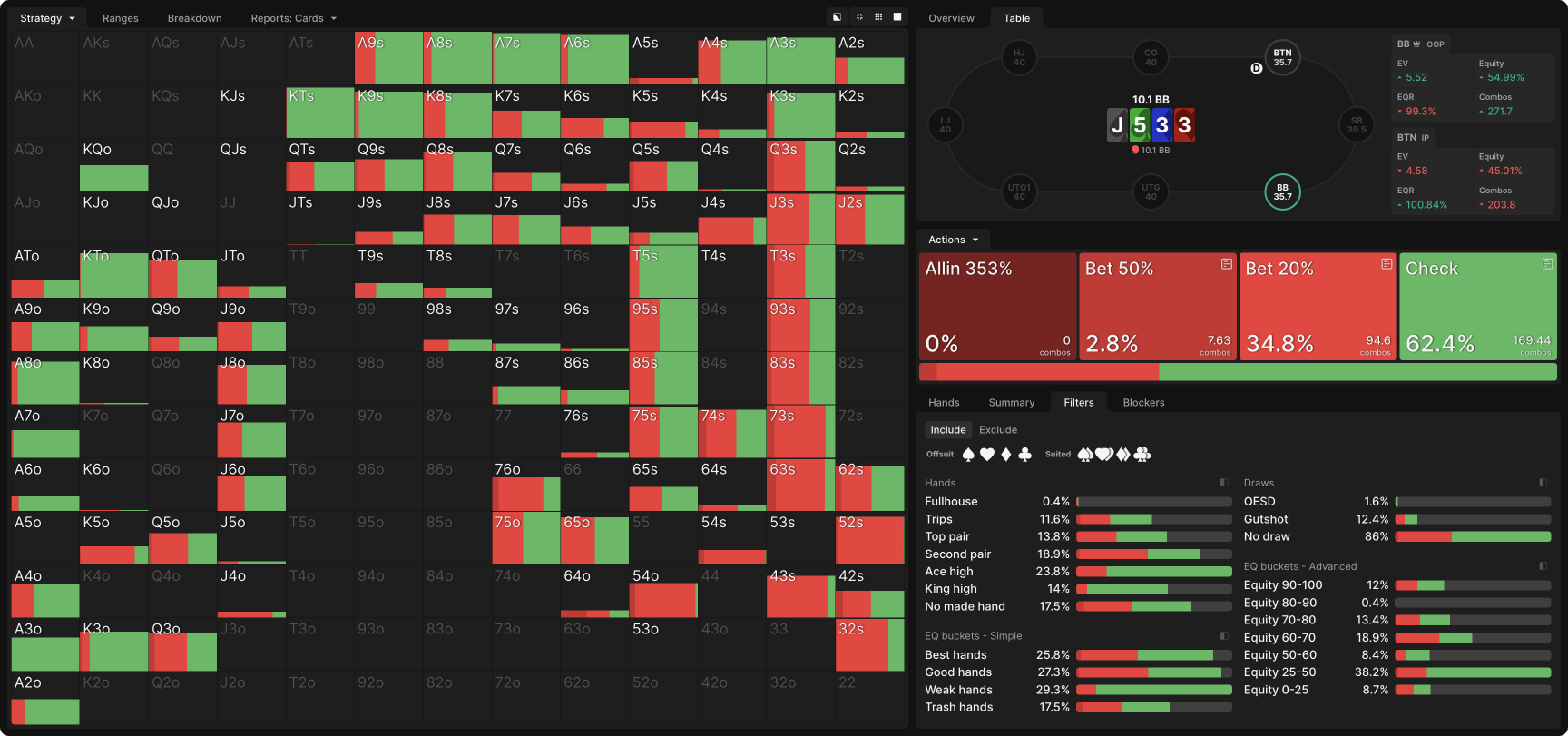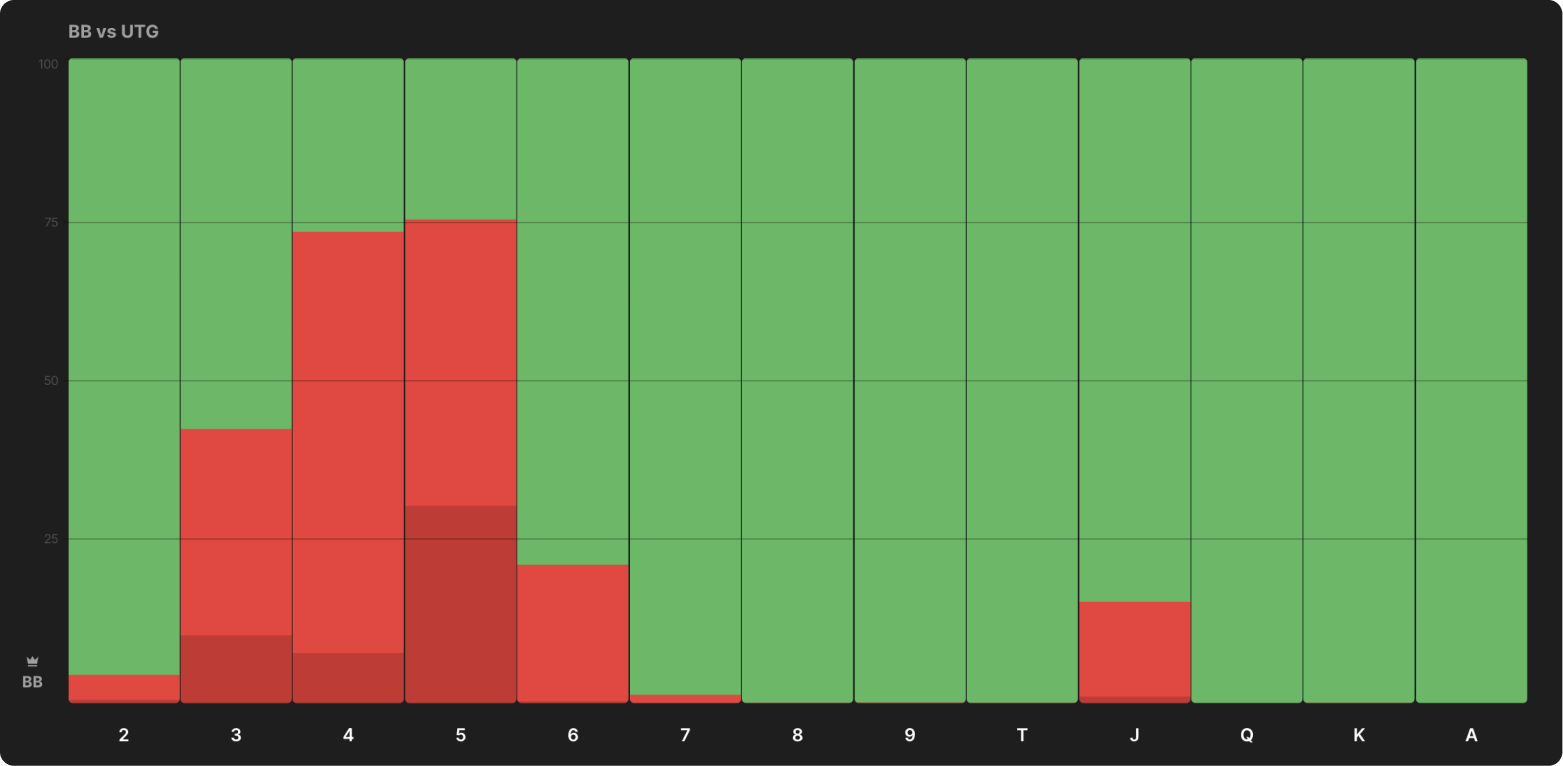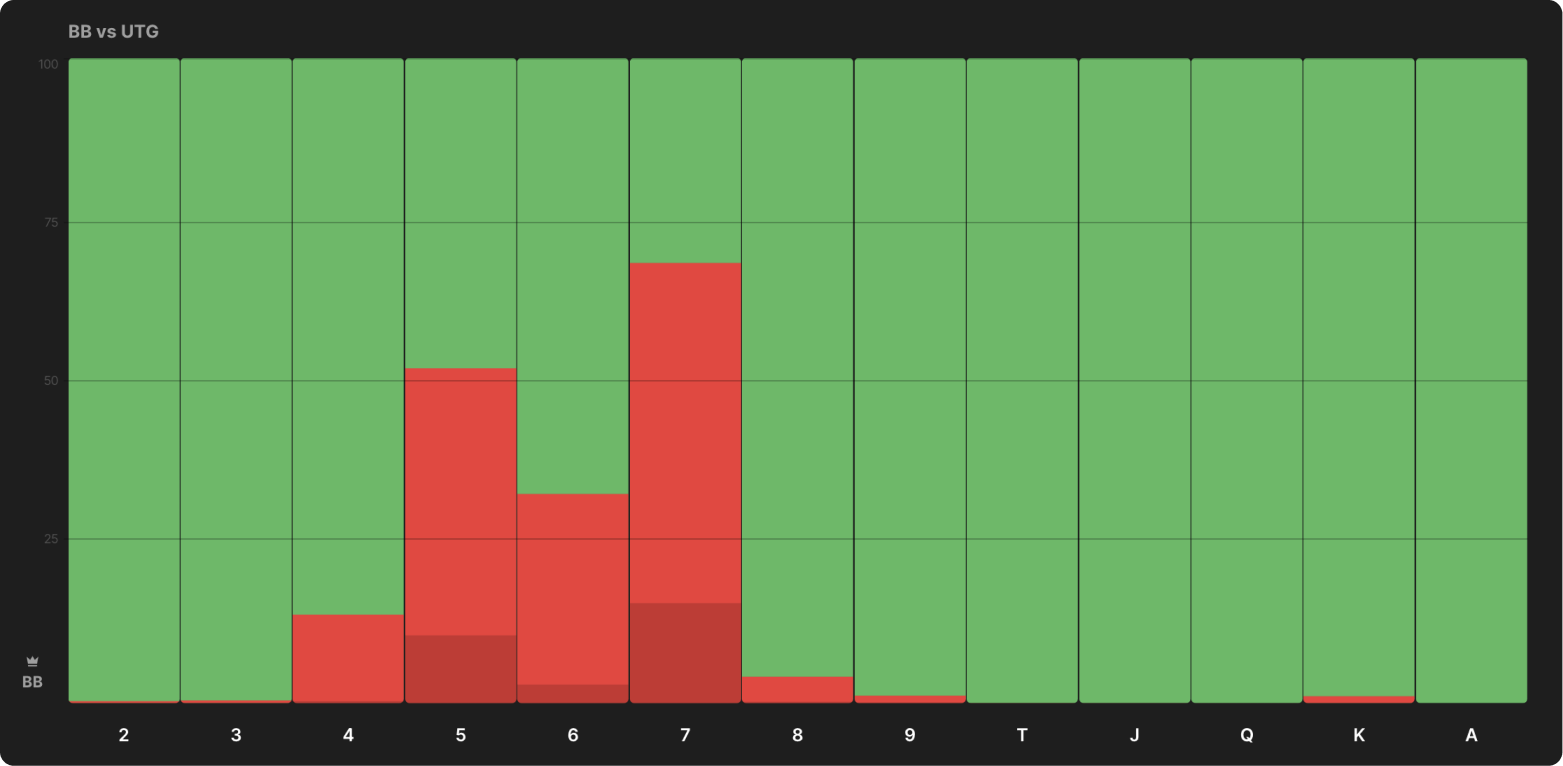How and Why You Should Use Turn Donk Bets

Donk betting–taking the betting lead away from the previous street’s aggressor–on the flop is rarely correct and easy to misapply. On the turn and river, however, donk betting strategies are both easier to implement and more strategically relevant.
To understand why, you must understand how donk betting relates to the distribution of equity and of nutty hands between the ranges of the previous street’s aggressor and their opponent. Before the flop, an open- raiser always has a stronger range than an out of position caller. This translates into an equity and a nuts advantage on most flops. Even when the caller flops a nuts advantage–on low paired boards, for instance–the raiser usually enjoys such a large equity advantage that it is correct to check to them anyway. Flops where the caller makes up their preflop equity deficit to the point where they can think about taking the betting lead, are few and far between.
However, once they check and call a flop continuation bet, this distribution changes entirely. The raiser typically bets many of their weakest hands, but their opponent rarely calls with weak hands. After calling a continuation bet, the preflop caller should have at least as much equity as the preflop raiser, if not more.
After calling a continuation bet, the preflop caller should have at least as much equity as the preflop raiser, if not more.
The reason this does not translate into donk betting on the average turn is that this action magnifies the preflop raiser’s nuts advantage. They bet most of their strongest hands on the flop, after which their opponent is incentivized to raise their strongest hands. By just calling the continuation bet, the caller strengthens their range, slicing off many weak hands they would have folded, but also caps it, slicing off many strong hands they would have raised. This leaves them with mostly medium-strength hands which, despite having a fair bit of equity, are not terribly interested in growing the pot, and therefore they usually check the turn.
The exceptions are turn cards that change this dynamic, promoting many previously modest hands to monsters that are interested in growing the pot. If these hands are more likely to be in the flop caller’s range than in the better’s, then it can be correct for that player to often bet the turn–sometimes even with their entire range-rather than check to the previous street’s aggressor.
Pop Quiz
Before we get into the whys and hows of donk betting various turns, let’s see how much of it you can intuit. With 40bb effective stacks, UTG opens for 2.3bb and is called by the BB. The BB checks and calls a bet of 33% pot on the flop. For each of the board textures below, try to predict the turn cards on which GTO Wizard will give BB a substantial donk betting range. Remember: the trick is to identify the turn cards that will promote many of BB’s medium-strength hands without doing the same for UTG.
- J♠5♣3♦
- K♠Q♥9♦
- K♠Q♥5♥
- K♠7♦5♥
Flop: J♠5♣3♦
What turn cards will BB donk most often on J♠5♣3♦ ?
BB does virtually all their donk betting on the following cards: 2, 3, 4, 5, and 6.
The low board pairing cards (5 and 3) promote their modest pairs which are under-represented in UTG’s flop c-betting range. The low straight filling cards (2, 4, and 6) fill straight draws which, again, UTG is unlikely to have opened preflop.
A board-pairing J is not such a great card to donk bet because UTG will have plenty of those in their preflop opening and flop c-betting ranges as well, and with a better kicker, on average. This card does not shift the nuts advantage to the caller.
Flop: K♠Q♥9♦
What turn cards will BB donk most often on K♠Q♥9♦?
This was an especially good flop for UTG, so BB does less donk betting, in general. A 9 is the main card that helps BB more than UTG. While UTG has some 9-x, it is a much bigger part of BB’s range. The same can’t be said for Queen-x, and certainly not for King-x.
At this stack depth, trips are good enough to treat as the nuts. Technically, UTG is still more likely to have a full house, but those are rare enough that BB doesn’t try to play around them when they have trips.
Note that the straight completing cards (J and T) are not particularly good donk betting candidates because UTG has AJ and AT at full frequency.
Flop: K♠Q♥5♥
What turn cards will BB donk most often on K♠Q♥5♥?
As with KQ9r, the bottom card pairing is the main impetus for donk betting, with the second card pairing being a decent candidate as well. There’s a new contender on this board, however, which is any flush-completing card. Although UTG makes some flushes as well, BB’s range is more concentrated around such draws, making these especially good turn cards for them.
Flop: K♠7♦5♥
What turn cards will BB donk most often on K♠7♦5♥?
Once again, we see the lower board pairs showing the highest frequency of donk betting, followed by the straight-completing 6. But why not 9, 8, and 3, which complete the more obvious open-ended straight draws? BB does a bit of donking on these, but not nearly as much as on a 6.
Two things are happening here:
- 98 is a much bigger part of BB’s range than 86 or 64. BB has 98o in their preflop calling range at almost full frequency and more than half their combos of 98s, whereas they have very little 86o and no 64o. The open-ended straight draws are also high-frequency check-raises on the flop, so BB actually isn’t that likely to turn straights on these cards
- In addition to filling straights, the 6 also gives BB more two-pair combos than those other cards, as both 76o and 65o are in their range at nearly full frequency.
Facing Later Position Openers
UTG vs BB is where range disparities are most significant. The BB’s calling range will contain many hands too weak for UTG to open, making it more likely for a lucky turn card to improve their range disproportionately.
As the preflop raiser gets nearer to the BTN, their range gets wider. It’s never as wide as a BB calling range, but the gap between the two narrows, and the ranges contain more of the same hands. This makes it more likely for the key cards we identified– those that complete draws or pair the second or third card on the board– to help the opener nearly as much as they help the caller.
The opener’s wider range also incentivizes more check-raising on the flop, and draws are often good candidates for this play. That means draw-completing cards are less likely to help BB after they check and call a continuation bet from a later position opener.
For example, here is BB’s donk betting strategy across all turns on a J53r board against a BTN opener:
All the same cards are good for donk betting as against an UTG opener, but the overall frequency is much lower, barely 7%, down from nearly 18% against UTG.
Which Hands Should Bet?
To develop intuition around which hands to donk bet, we will look at a BB v BTN scenario with 40bb starting stacks on a J♠5♣3♦3♥ board. The action so far has been BTN raise to 2.3bb and BB call followed by BB checking and calling a 33% pot continuation bet on the flop. BB donk bets roughly 40% of their range here, providing a good sense of which hands gain the most and least from such bets (as opposed to spots where BB has a 70%+ donk betting frequency, where virtually any hand is a candidate for betting and patterns are harder to discern).
First, let’s look at BB’s equity heatmap for the 3♥ turn:
From this image, we can discern a polar betting range. Almost all BB’s bets come from their top 50% of hands and their bottom 25%, and they mostly check their middling hands. Let’s see what exactly those hands are:
When BB bets A3, they get a lot of folds from hands that might have bluffed if checked to.
BB mostly donk bets when they turn trips, unless they have an Ace or King kicker. This is because the lower kickers block BTN’s folding range, which overlaps heavily with their bluffing range should BB check. This includes hands like T9o and 87s. Another way of thinking about this is that when BB bets A3, they get a lot of folds from hands that might have bluffed if checked to, and this is less true when they bet 73.
Trips are actually not the bulk of BB’s betting range, although it may appear that way on the grid. Remember there are only two possible combos of Q3s and nine of J9o, so betting J9o at 50% frequency amounts to more combos than betting Q3s even at full frequency.
Second pair is a huge part of BB’s donk betting range. These hands are often ahead, can get called by worse (BTN never folds Ace-high and folds only their worst King-high), and benefit from denying equity to hands like T7s. This is why 52s is a higher frequency bet than T5s: T5 sometimes induces bluffs from hands it dominates, while 52 has a better chance of folding out two live overcards.
BB’s nuts advantage prevents their opponent from raising too often.
Modest one-pair hands are the less polar portion of BB’s betting range. They are in the toughest spot when raised (weaker hands have trivial folds, and trips can happily continue), but BB’s nuts advantage prevents their opponent from raising too often.
Deeper Stacks
Donk betting strategies on the turn do not vary much with stack size. Generally, deeper stacks tend to make donk betting slightly less desirable, as the risk of growing the pot from out of position is greater. Conversely, very shallow stacks reduce the risk of donk betting modest pairs, so frequencies tend to go up a bit. But in both cases, the heuristics about which turns to donk bet still apply.
Donk betting strategies do not vary much with stack size.
The composition of ranges changes a bit with deeper stacks as well, with BB typically having more incentive to check-raise strong draws on the flop and less incentive to check-raise one-pair hands. Thus, their overall donk betting frequency goes down slightly with 100bb stacks on J53r, but it goes up on J turns, as they do not check-raise as much Jack-x on the flop (or three-bet as much preflop) and so have more of that hand class in their check-calling range.
The drop in betting frequency is more apparent on K75r, where BB donks ~16% with 40bb stacks and ~11% with 100bb stacks:
Deeper stacks incentivize check-raising flop more with nutty draws and fewer with one-pair hands.
BB donk bets the straight-completing turns less often deepstacked because they would’ve raised more straight draws on the flop, and therefore don’t have these draws in their check-calling range.
Conclusion
Donk betting turns is easier and more profitable than donk betting flops and so more worthy of consideration in your study repertoire. The key points to keep in mind are:
- Look for turns that introduce a lot of new nutty hands into your range. Usually, these are turns that complete draws or pair the second or third card on the flop.
- Donk bets should be small, often 20% of the pot or so. This enables you to accommodate not only nutty hands (which you should mostly bet) but also medium pairs that can benefit from thin value and protection.
- When in doubt, default to checking most turns. If the turn card pairs a board card 9 or lower, then default to betting. Modulate this heuristic by assessing how big the range disparity is.
There will be more range overlap on these lower board cards as the preflop raiser opens wider.
Ready to practice your donk betting skills? This drill drops you right into the action, playing as a BB who has called an UTG raise and a 33% pot continuation bet and must decide whether to donk bet the turn or check to the flop aggressor.
Author
Andrew Brokos
Andrew Brokos has been a professional poker player, coach, and author for over 15 years. He co-hosts the Thinking Poker Podcast and is the author of the Play Optimal Poker books, among others.
